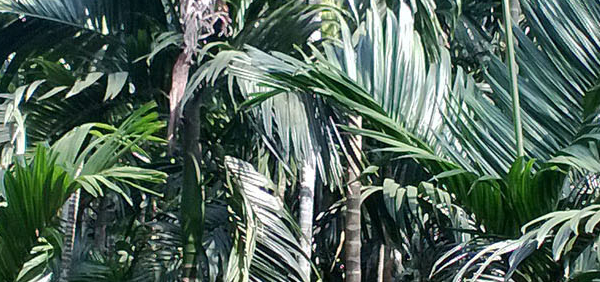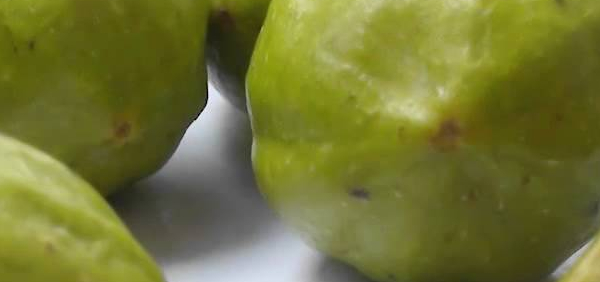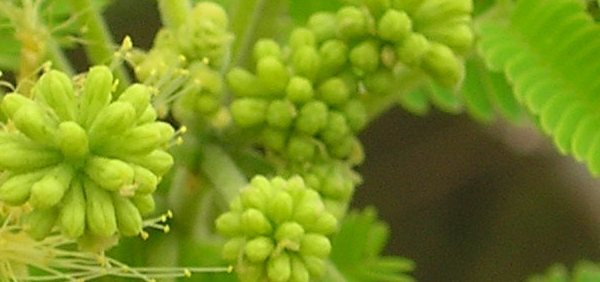krishnacandana :

Cultivation:
Cultivation Practices (Agrotechnology)
Seed viability levels, optimum seed storage conditions, suitable seed germination methods and vegetative propagation techniques were carried out in this species (http://www.pgis.lk). The plant regenerates from stumps of old plants and also through seeds, but the rate of regeneration is found to be extremely low (Harinarayanan et al., 1994). Both freshly collected seeds and those stored failed to germinate even after pretreatments (puncturing the testa, acid, hot, cold water treatments, etc). Seeds have a dormancy period of 6 months and about 200 days are taken for 90% germination. Incubating the seeds at 30°C and 80% relative humidity, 90% germination is obtained in 60 days. The fresh stem cuttings of pencil size are suitable for vegetative propagation. Cuttings of about 15 cm length are dipped in IAA 500 ppm for 24 h. Vegetative buds appear after 2 weeks that produce nodes and internodes. Within a month the shoots attain a length of 45 cm. After one month of growth, the cuttings produce 1-2 roots and after one more month the plants can be transplanted to larger containers for hardening. The seedlings or sprouted cuttings thus developed must be planted in pits at a distance of 1-1.5 m away from the trunk of the tree that will provide support. Irrigation may be provided depending on climate and soil conditions. About 360 seeds constitute 1 kg (Nambiar et al., 2000; Sumy et al., 2000).
Tissue Culture
Preliminary studies on in vitro multiplication of Coscinium fenestratum was carried out by Nair and Seeni (2003). A protocol for obtaining berberine-producing callus and cell suspension cultures were established in this plant from the petiole segments. Among the auxins tested, highest yield of berberine (5.79 mg/30 mL; 4.14 times to that of control) was obtained with 4 mg L-1 of NAA, while the best cell growth (214.43 mg dry wt., 1.96 times to that of control) was observed in the presence of 2 mg L-1 of 2,4-D (Narasimhan and Nair, 2004a). Intercellular berberine and berberine released into liquid media were studied by Narasimhan and Nair (2004b).
Harvesting:
Harvesting and Post Harvest Handling (Semi-processing)
The root, stem and branches are collected as and when required from the forest. The mature liana stem are cut 50 cm above the base leaving short stump for coppicing. Three yearly harvesting cycles are ideal (Ekanayake et al., 2004). They are dried for a few weeks and used or sold in the market. The dried stems are not liable to insect or pest attack and can be stored for long periods without any loss to the medicinal properties. In preparing them for use, the stem is first scraped to remove the outer corky rind and then gently beaten with wooden mallets till the useful part separates out. Wood is not ordinarily used for medicine (Kolammal, 1978). But nowadays the entire stem is cut into pieces and used along with the root. For obtaining the yellow dye, the wood is broken into pieces, steeped in water, crushed in rice-husking machine and squeezed. The dye is used either alone or in combination with turmeric (Anonymous, 1998).
- » Classification and names of krishnacandana
- » Synonyms and definitions of krishnacandana
- » Drug Properties of krishnacandana
- » Chemical Constituents of krishnacandana
- » Standardization of krishnacandana
- » Parts used and Dosage of krishnacandana
- » Morphology and Histology of krishnacandana
- » Distribution and Conservation of krishnacandana
- » Cultivation of krishnacandana
- » krishnacandana in the market
- » Medicinal Uses of krishnacandana
- » Researches and clinical trails of krishnacandana
- » krishnacandana in other sytems of medicine
- » Ayurvedic formulations with krishnacandana
- » Images of krishnacandana












